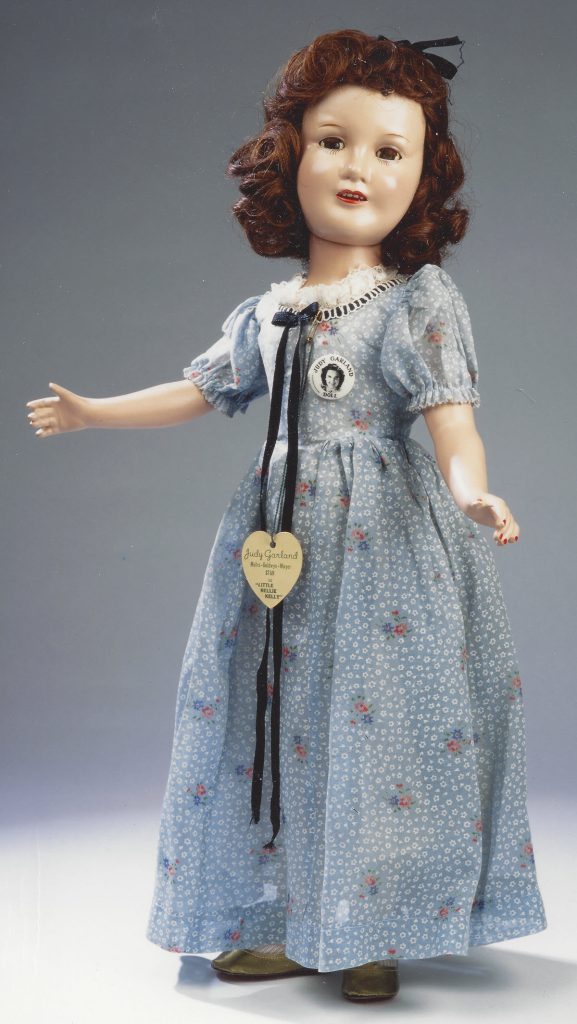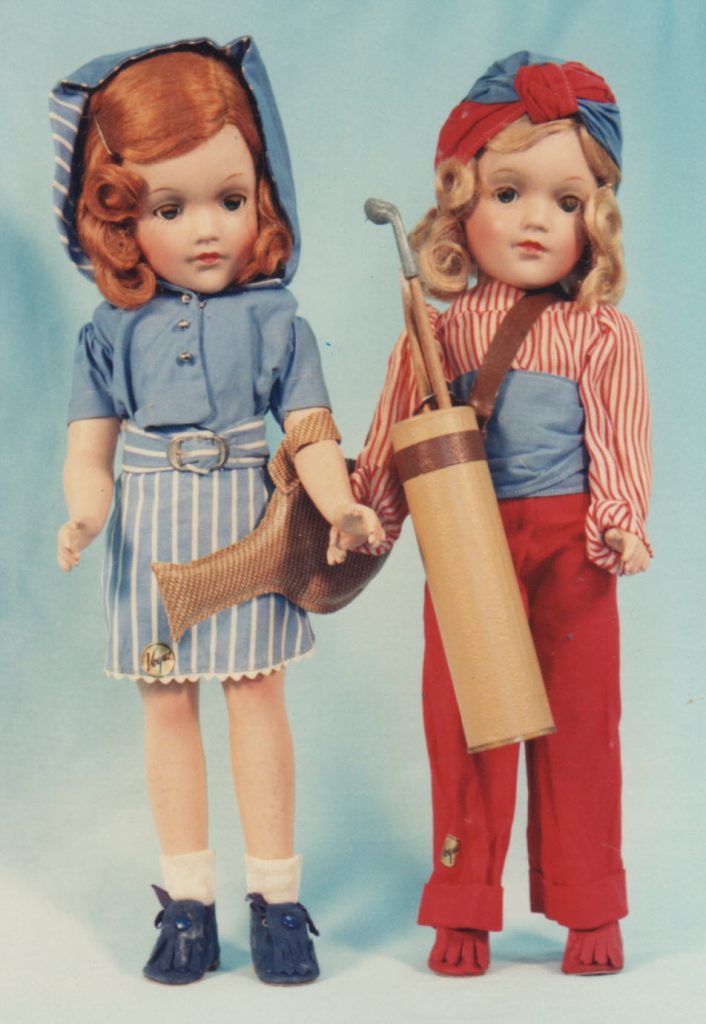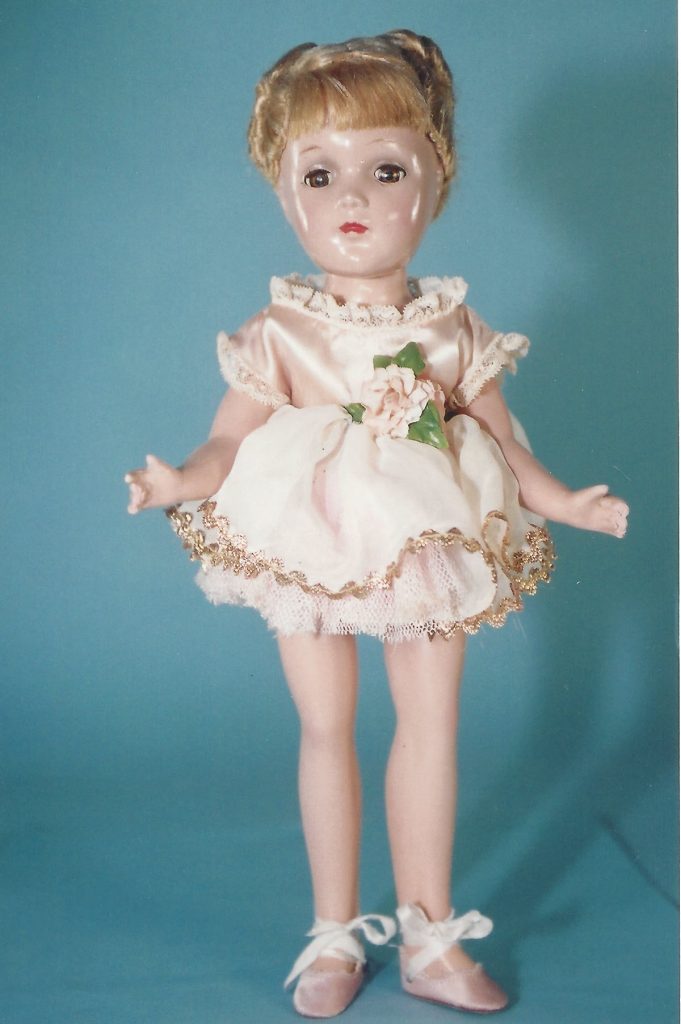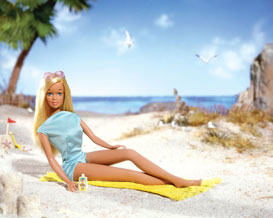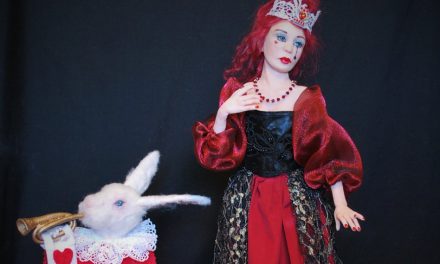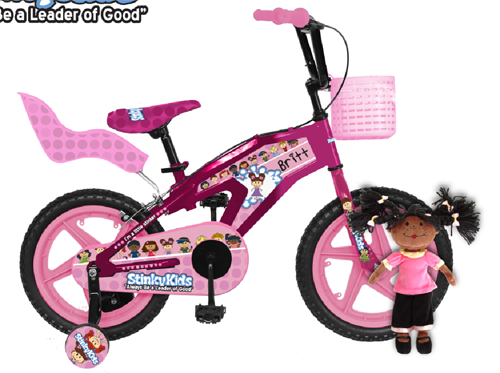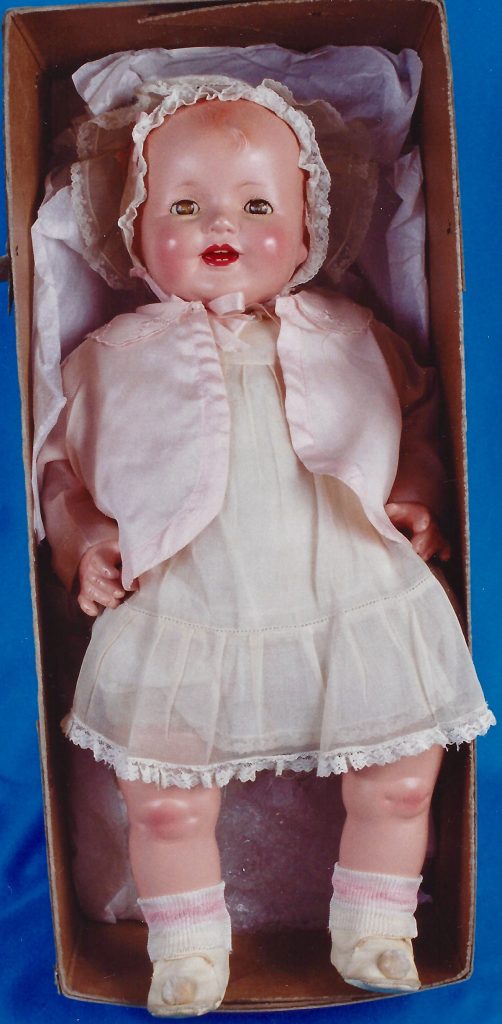
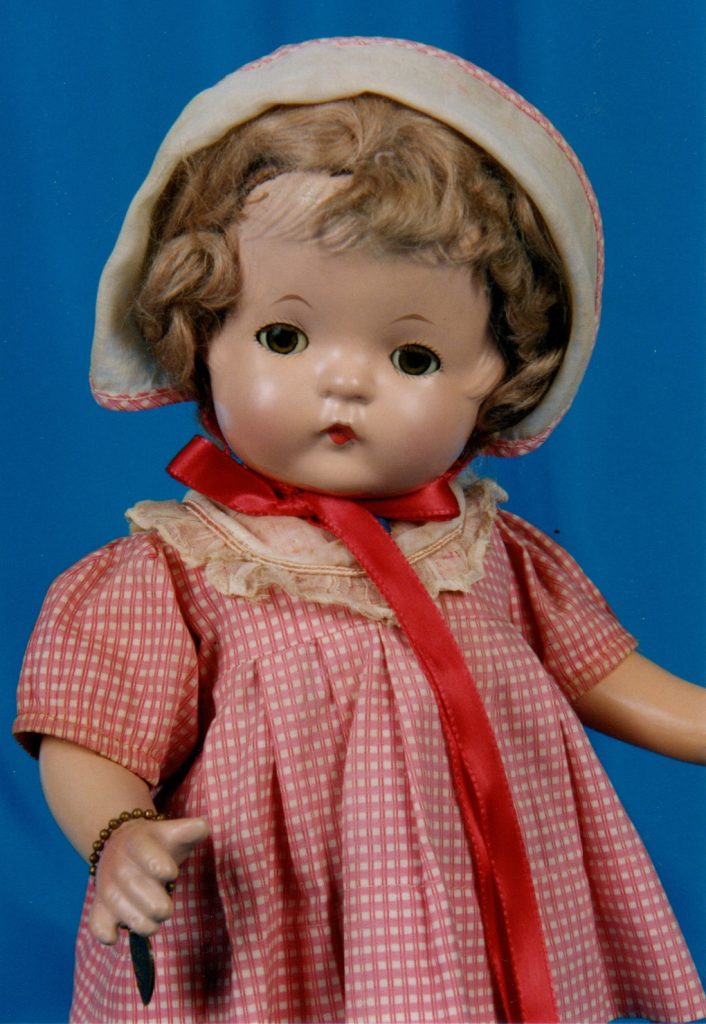
By Judith Izen
Photos by Judith Izen, except where indicated.
The 1940s was the height of artistry for composition dolls. Composition, made of sawdust and glue, had been the primary material used for American dollmaking since its 1919 development. Composition was an improvement over the bisque and china dolls previously available to children. Doll manufacturers, such as American Character, Effanbee, Ideal, and Madame Alexander, produced beautiful baby and girl dolls by the score during the 1940s. The doll companies also created dolls portraying storybook and fairy tale characters and personality dolls portraying movie stars and real-life “celebrities.”
In general, girl dolls were made entirely of composition while baby dolls each had a stuffed cloth body with composition head and limbs to make them soft to hold, like a baby. An added bonus to many baby dolls was the “mama” sound that came from the middle of the cloth bodies — when a doll was laid down, it would cry “mama.” Another special feature was the sleep eyes — the doll’s eyes would close when she was laid down, and when picked up, her eyes would open.
Popular girl dolls included Wendy Ann by Madame Alexander, Nancy Lee by Arranbee, and Effanbee’s Patsy family. Most of the dolls were produced in the 1930s and continued to be made into the 1940s. Effanbee produced an entire family for Patsy, including dolls ranging in size from 5.5 inches to 30 inches. Boy dolls such as Effanbee’s Skippy weren’t as common.

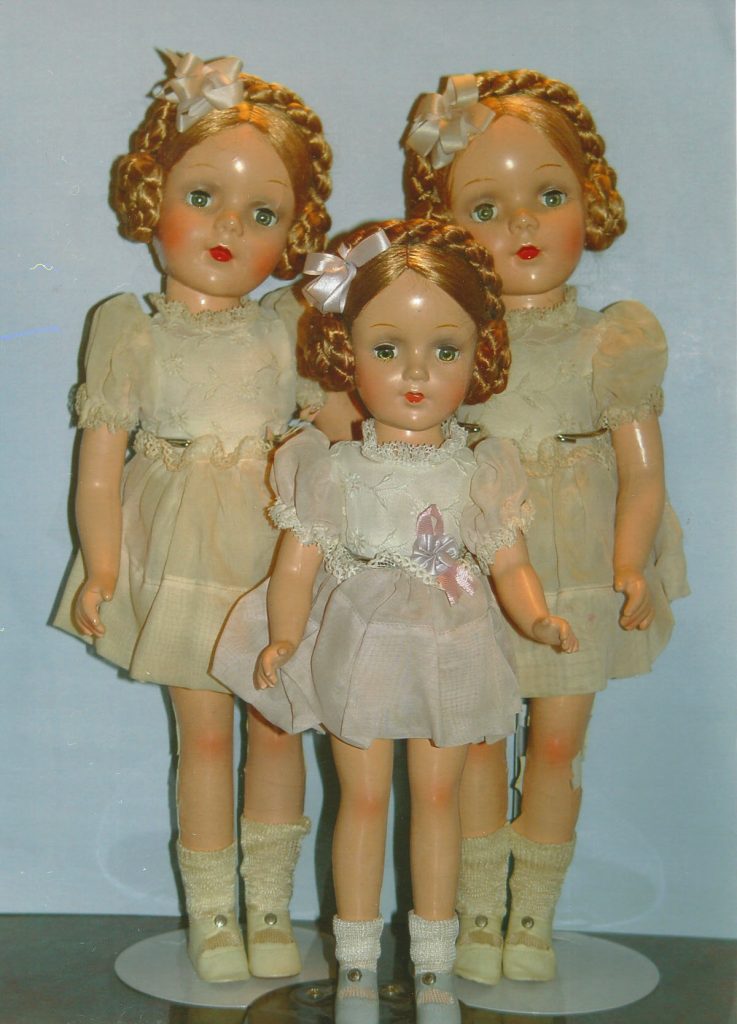
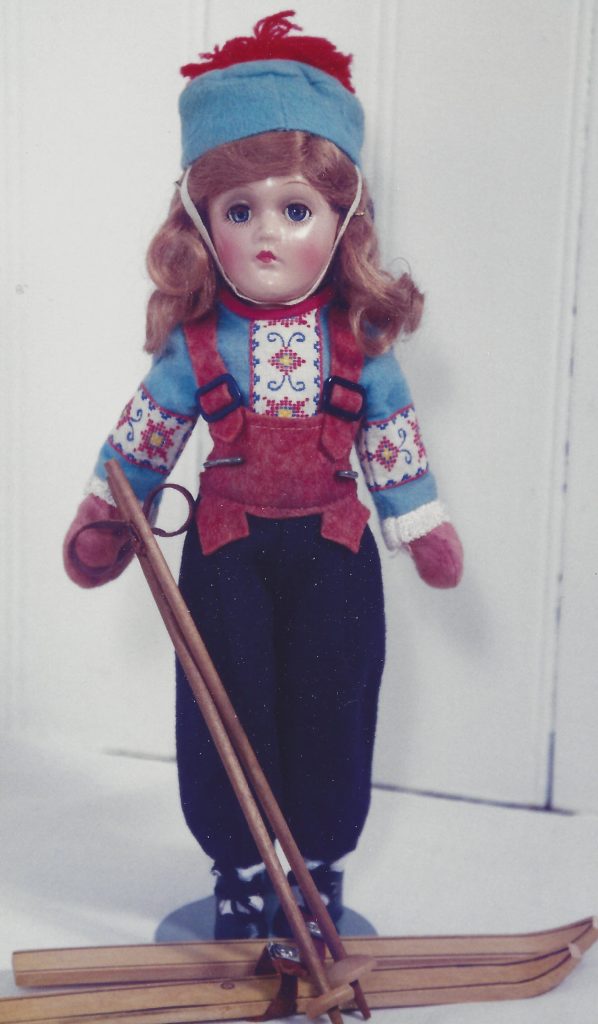
Girl dolls generally had mohair or floss wigs and wore dresses or gowns. They were also available in sports outfits, such as those seen on ice skaters, skiers, equestrians, tennis players, or ballerinas. Some even came with accessories like umbrellas or makeup kits. An example of this is the Sports Series dolls sold by Vogue Doll Company. The dolls were manufactured by the Arranbee Doll Company, but Vogue dressed and sold them under the Vogue name. It was a common occurrence for doll companies to buy their dolls from other companies and then dress and sell them under their own name. As a result, collectors see many unmarked dolls that are hard to identify because they look like one company’s dolls but were sold by another company.
Character Dolls
Companies including Amberg, American Character, Cameo, Freundlich, Horsman, Ideal, Madame Alexander, and Vogue produced character dolls based on children’s literature, comics, and advertising.
McGuffey Ana from Madame Alexander is an example of a storybook doll. She was a character included in children’s readers from the 1830s onward. Madame Alexander also made Little Women dolls, as well as Scarlett and Melanie from Gone with the Wind.
Advertising dolls, such as Buddy Lee advertising Lee dungarees, are of interest to collectors today. Buddy Lee dolls were made by the H.D. Lee Company, Inc., makers of Lee Jeans. Buddy Lee is a boy doll, which is harder to find and may have more value to collectors today than the general 1940s girl dolls. Of course, like all collectibles, rarity and condition are key to pricing.
During the 1940s, many doll companies also made dolls depicting characters from World War II. Ideal, Arranbee, American Character, and Vogue created dolls dressed as members of the women’s armed forces, WACs and WAVES.
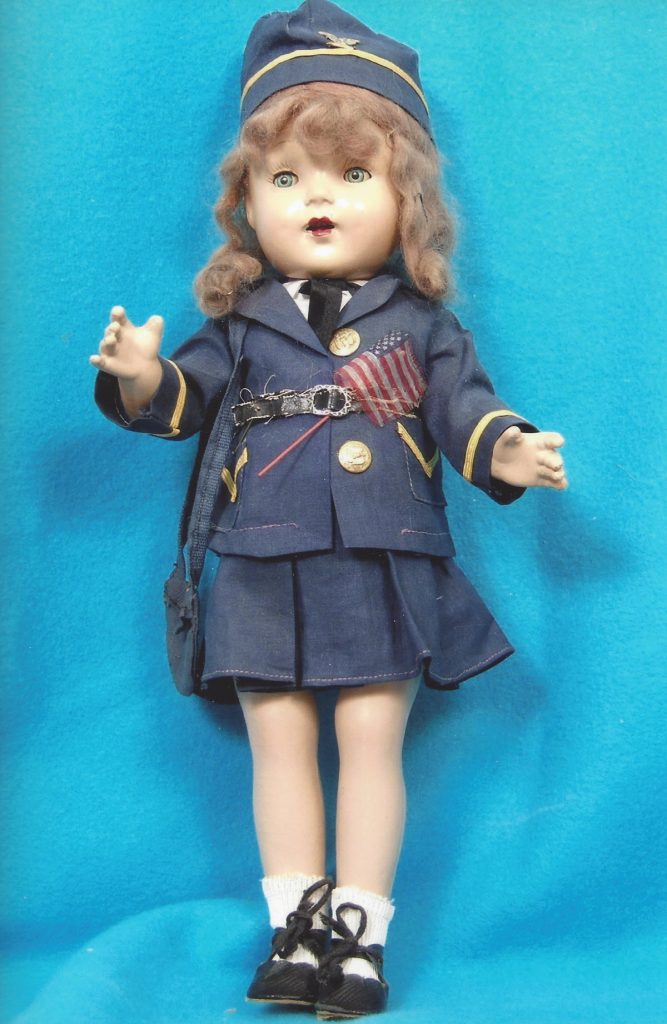
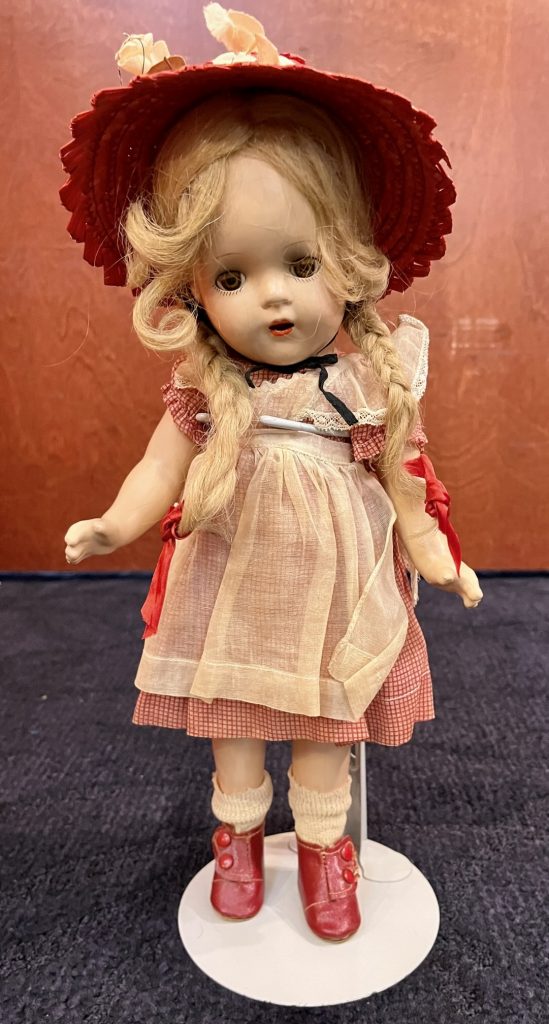
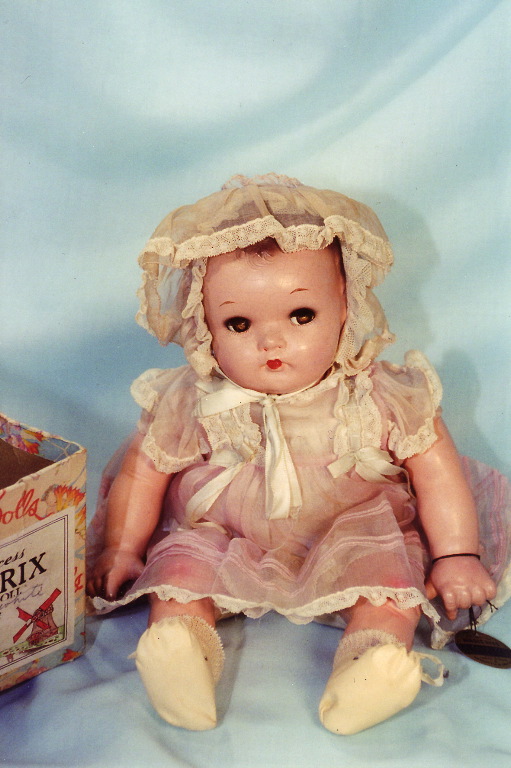
Price Guide
For dolls in excellent to mint condition (to be used as a reference only)
| Lovums by Effanbee | $250 |
| Patsy Joan | $250 |
| American Character composition girl dolls | $200 |
| Arranbee Debu’teen | $250 |
| American Character ballerina doll | $150 |
| McGuffey Ana | $150 |
| Buddy Lee | $500 |
| American Character WAVES | $275 |
| Judy Garland teen doll | $900 |
| Princess Beatrix | $400 |
Celebrity Dolls
One of the most desirable dolls of the 1940s is the Judy Garland teen doll. Garland was the young star of The Wizard of Oz and the Andy Hardy movies. The teen doll is all composition and came in 15-inch and 21-inch sizes. She has an auburn human-hair wig, brown sleep eyes, upper eyelashes, painted lower eyelashes, and an open mouth with six teeth and a felt tongue. On the back of her head, she is marked “Ideal Doll/Made in USA,” and she has a backwards “21” and “IDEAL” on her back.
Other celebrity dolls produced in the 1940s were Rita Hayworth by Uneeda Doll Company, Margaret O’Brien by Madame Alexander, and Deanna Durbin by Ideal. There were also dolls of real-life baby celebrities, including Princess Beatrix of the Netherlands by Ideal.
The end of the 1940s saw the phasing out of composition dolls — plastic, a new technology, was becoming widely adopted because it was more durable and easier to mass-produce. Composition dolls are now a lovely chapter of dollmaking history and an example of American innovation.
